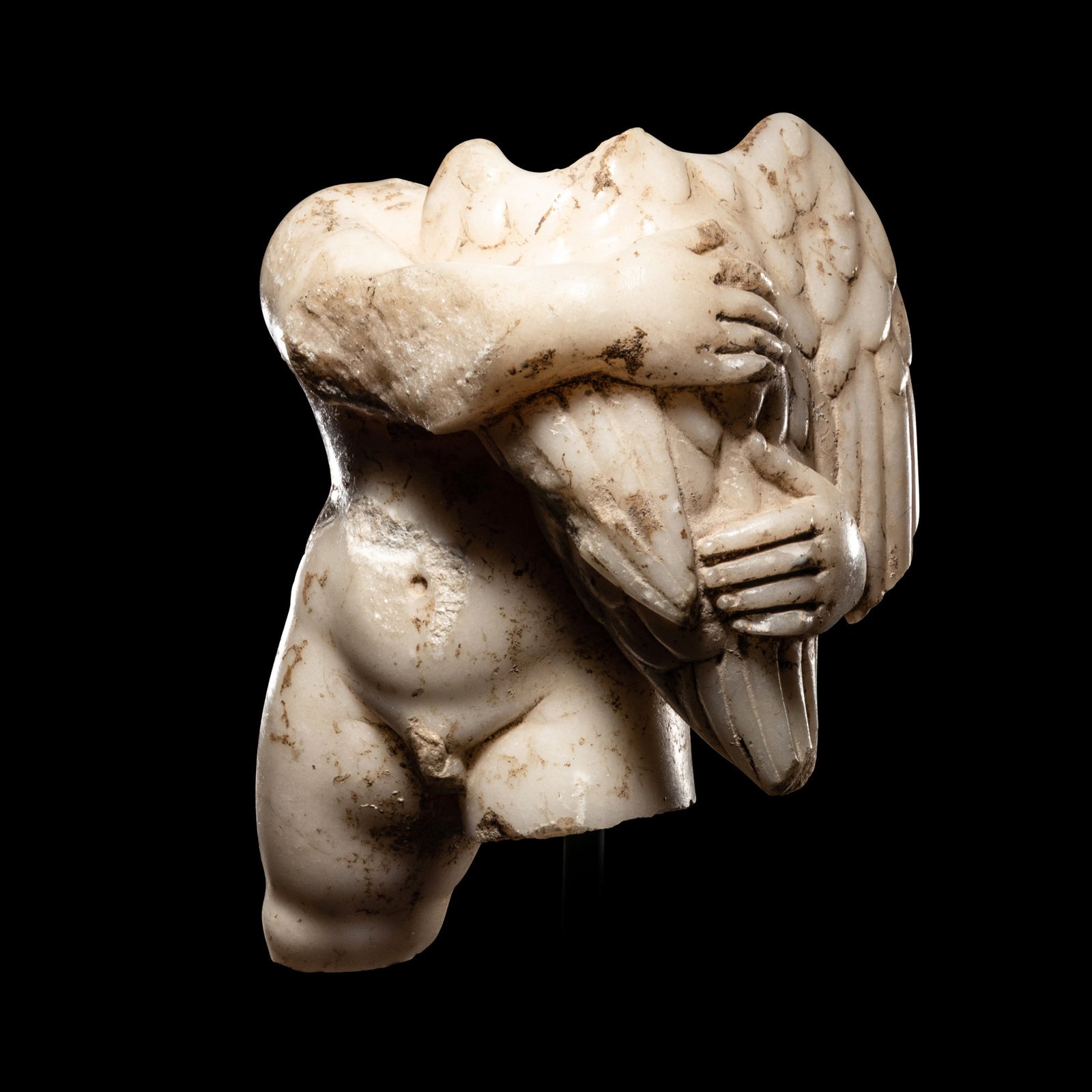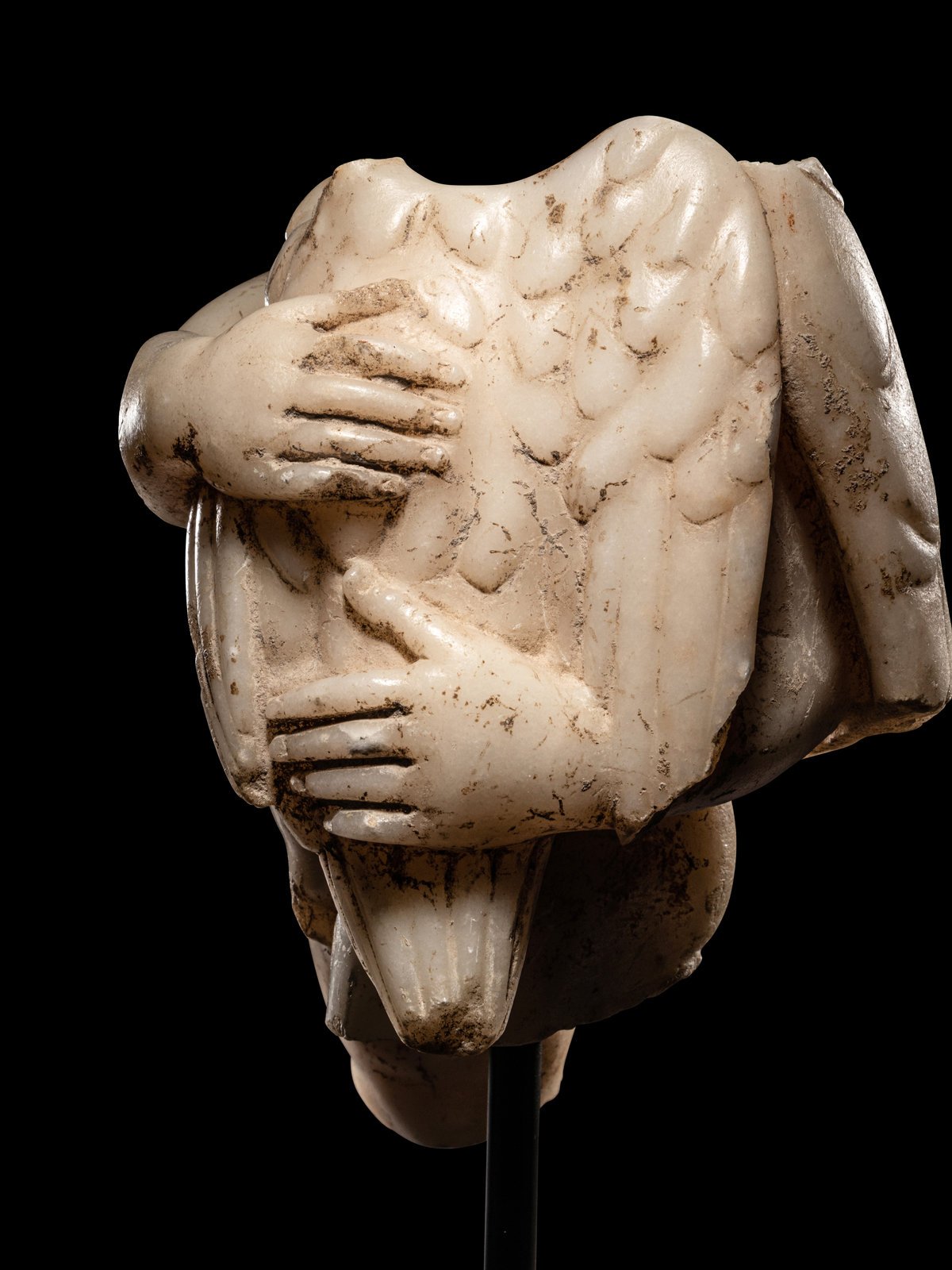Ancient Roman Gold Ring with Cornelian intaglio of a Soldier



Ancient Roman Gold Ring with Cornelian intaglio of a Soldier
Roman, 2nd - 3rd century A.D.
Gold, Emerald, Sapphire, Cornelian, Green Chalcedony
D: 2.1 cm
Serial: 3522
Provenance: Ex- German art market, 1995;
US Private collection, New York, acquired November 3, 2019; Gifted to the current owner in 2019
This rare and extravagant piece displays seven gemstones (originally eight and one is lost) set at equal intervals around a thick gold hoop. The central stone is a cornelian with an engraving of a Roman foot soldier. There are four green chalcedony stones, one facet emerald, and one sapphire.
While the carnelian engraving technique owes much to Hellenistic precedents, this ring has many qualities that may be considered typically Roman. The Roman taste for polychromy is reflected in the abundance and variety of the gems, prefiguring later Byzantine work. The interest in rare and precious stone, such as the sapphire, is also characteristic of Imperial Rome, where the habit of gem collecting had become well established.
The subject of the engraving is also distinctly, even ideologically, Roman. The Imperial infantryman, unlike many of his adversaries, used a standardized panoply of military equipment, all of which are represented here. The scabbard drawn across the figure’s chest suggests the Roman short sword, or gladius, while the left hand appears to grip what may be a pilum, or throwing spear. The body armor and short tunic reflect what most soldiers actually wore, while the high crested helmet, complete with cheek-pieces, suggests an individual of some distinction, perhaps a wealthy veteran, who could afford to supply himself with the highest quality equipment. The convex round shield with an iron boss, clearly delineated in the carnelian, is in the style of the Greek hoplite shield, and was also the typical shield of the early Republic. Here, however, it may be an artistic anachronism, as most Roman shields of the time were rectangular. The soldier is shown straddling a tree-stump, which may suggest the influence of sculpture on the composition, where figures in the round are frequently supported by such structural conceits. It is also a scene of realism, depicting life on the march.








